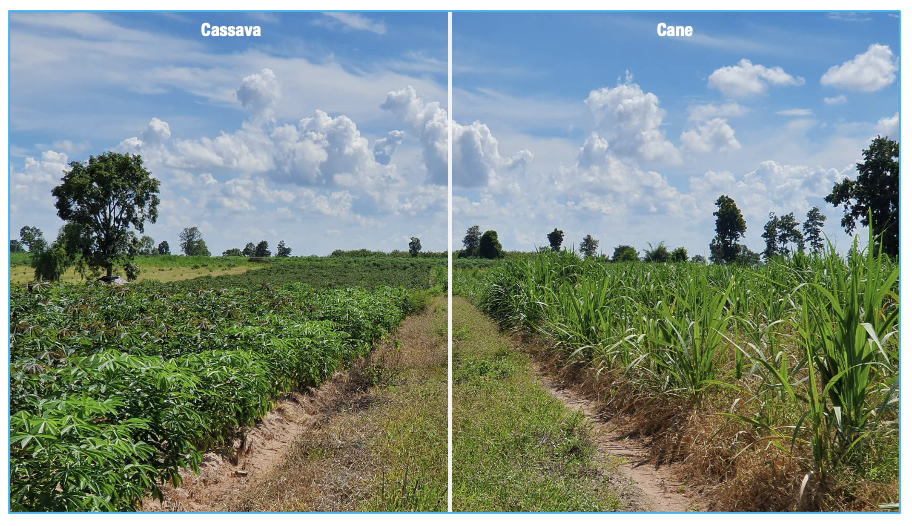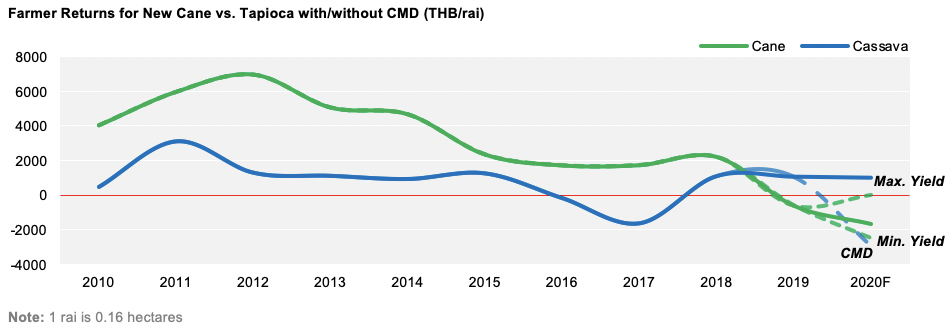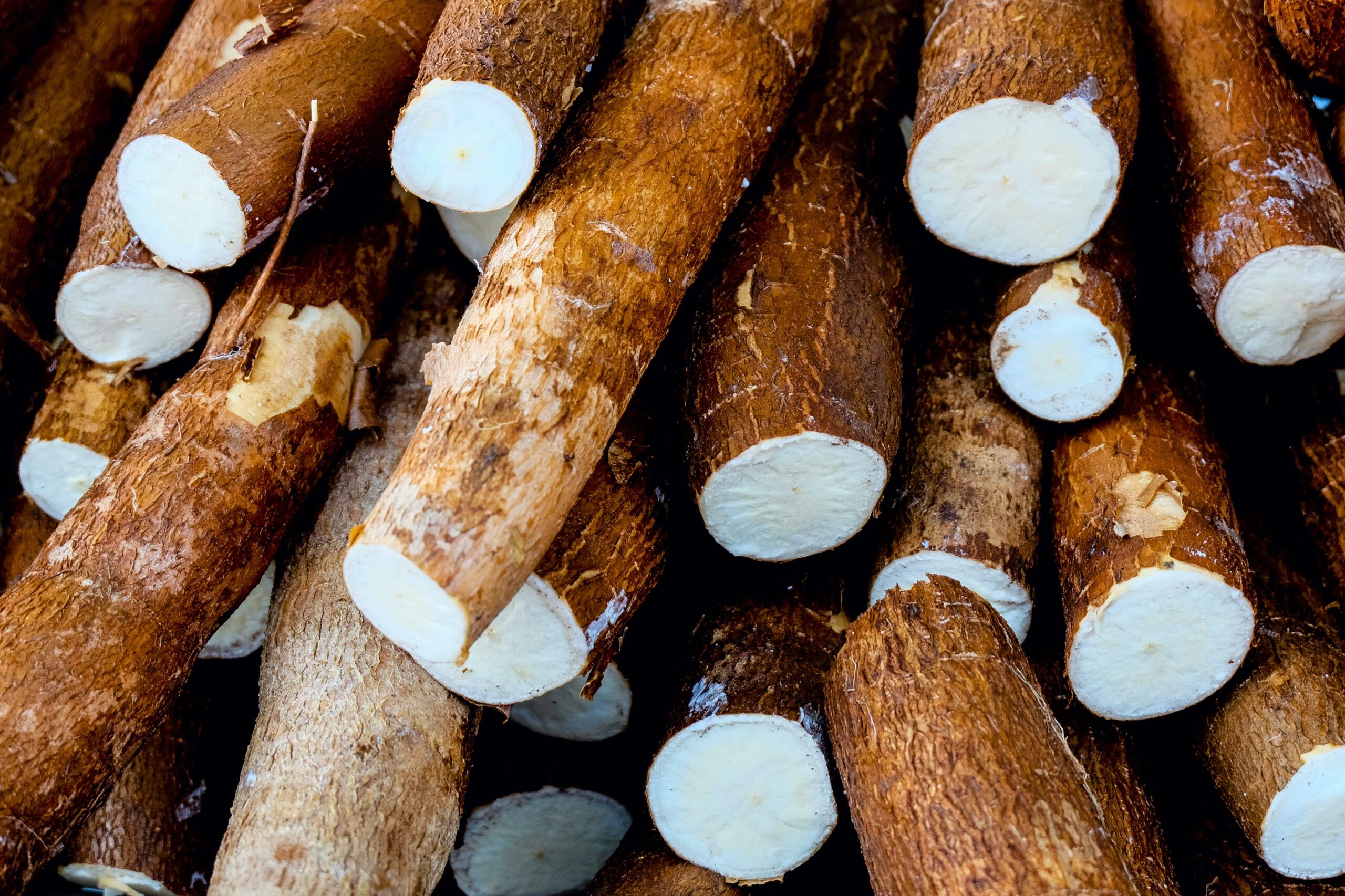- We think Thailand will produce 28.3m tonnes of cassava in 2020/21; up 12% year-on-year.
- This comes as many Thai farmers planted cassava instead of cane last year to earn more money.
- China’s increased demand for cassava chip also plays its part, as it looks for a cheaper form of animal feed.
Why is Cassava Replacing Cane?
- Broadly speaking, a lot of Thai farmers are now planting cassava instead of cane in search of greater returns.

- We recently joined the Thai Tapioca Trade Association (TTTA) on its annual six-day crop tour across Thailand to see how apparent this switch was.
- We learnt that Thailand will produce 28.3m tonnes of cassava in 2020/21; up 12% year-on-year (YoY).

- Thailand’s cane area is feeling the brunt of cassava’s increased production, having seen 20% of 2019/20’s cane area lost to competing crops.


- Thai farmers are not merely motivated by the money, however.
- The country suffered its worst drought in 40 years last season, which severely impacted cane yields.

- Cassava is a more resilient crop in such conditions, meaning the dead and dying cane was pulled up in Q2’20 and replaced with cassava.
- This causes further trouble for cane, as cassava has a 10-month growing cycle and is usually planted in the first half of the year.
- The later planting means it will not be possible to plant any early cane until the cassava is harvested.
What Will Thailand Do with the Cassava?
- Thailand will use approximately 20-30% its cassava domestically for in food, feed and ethanol.
- 5m tonnes of this will likely be exported to China as cassava chip and used as animal feed.
- Last season, China only imported 2.8m tonnes of cassava chip from Thailand as it had very high corn stocks, which were instead used to meet local feed demand.

- More recently, demand for cassava has increased as China’s corn prices have risen in light of its increased ethanol demand.
- As these prices continue to rise, its demand for cassava will also increase.

The Problem? Cassava Mosaic Disease (CMD)
- Cassava Mosaic Disease (CMD) is a growing problem in Thailand.
- Originally from Cambodia, the disease has now been identified in 29 Thai provinces and can have a catastrophic effect on crops.

- The disease is either spread via cassava seed stalks (which can affect yields by 80%) or by insects (which affect yields by 20%).
- When it was first detected in 2018, it impacted 0.01% of production, but this year, it could impact up to 5% (1.25m tonnes).
- This is something that Thai farmers will have to consider when choosing whether to plant cane or cassava next season.
- It could mean farmers switch back to planting cane later this year, causing a re-bound in Thai cane production in 2020/21.

More on this to come…

Other Opinions You May Be Interested In…















